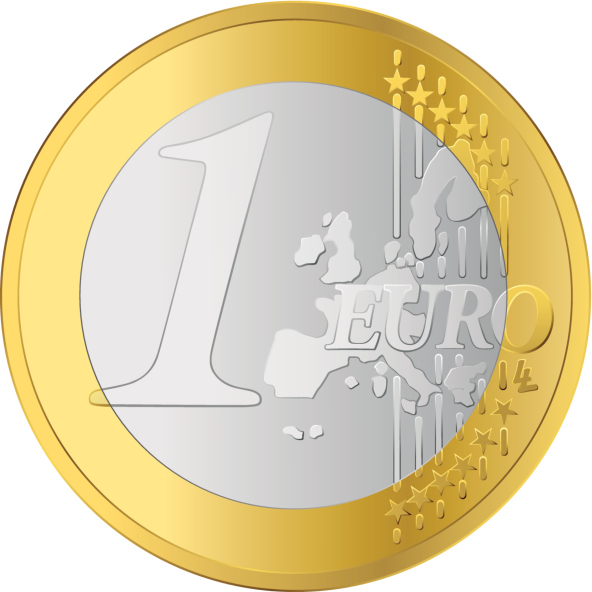
How much do you reckon you’d pay not to be dead three hours from now? That probably depends. If you’re 25 and healthy, a whole lot. If you’re 95 and sickly, maybe not so much. But for people in one part of the world—the former East Germany—the cost has been figured out, and it’s surprisingly cheap: three hours of life will set you back (or your government, really) just one euro, or a little below a buck-thirty at current exchange rates.
That’s the conclusion of a new study out of Germany’s Max Planck Institute, and it says a lot about the power of a little bit of money now to save a lot of suffering later—with implications for all manner of public health challenges, including the current Ebola crisis.
The new findings are a result of one of the greatest, real-time longitudinal studies ever conducted, one that began the moment the Berlin Wall fell, on Nov. 9 1989. Before that year, there were two Germanys not just politically, but epidemiologically. Life expectancy in the western half of the country was 76 years; in the poorer, sicker east, it was 73.5. But after unification began, social spending in the East began rising, from the equivalent of €2,100 per person per year to €5,100 by the year 2000. In that same period, the difference in lifespan across the old divide went in the opposite direction, shrinking from 2.5 years to just one year as the east Germans gained more time. Crunch those numbers and you get the three extra hours of extra life per person per euro per year.
“Without the pension payments of citizens in east and west converging to equivalent levels,” said Max Planck demographer Tobias Vogt in a statement, “the gap in life expectancy could not have been closed.” Increased public spending, Vogt adds, is often framed as an unfortunate knock-on effect of longer life. “But in contrast,” he says, “our analysis shows that public spending can also be seen as an investment in longer life.”
The idea that generous, tactical spending now can be both a money-saver and lifesaver is one that health policy experts tirelessly make—and that people in charge of approving the budgets too often ignore. Bill Gates often makes the point that $1 billion spent to eradicate polio over the next few years will save $50 billion over the next 20 years, not just because there will no longer be any cases of the disease to treat, but because the global vaccination programs which are necessary just to contain the virus can be stopped altogether when that virus is no more.
As TIME reported in September, British inventor Marc Koska made a splash at the TEDMed conference in Washington DC when he unveiled his K1 syringe—an auto-destruct needle that locks after it’s used just once and breaks if too much force is used to pull the plunger back out. That prevents needle re-use—and that in turn not only reduces blood-borne pathogens from being spread, it does so at a saving. According to the World Health Organization (WHO), $1 spent on K1 syringes saves $14.57 in health care costs down the line—or $280 for a $20 order of the shots.
All across the health care spectrum, such leveraging is possible. Critics of the Affordable Care Act have slammed the law for the cost of the preventative services it provides, and while it’s way too early to determine exactly how successful the law will be, the encouraging stabilization in the growth of health costs suggests that something, at least, is working.
Global health officials are making a similar, though more urgent, preventative argument concerning the Ebola epidemic in West Africa. Americans are rightly jumpy over the few cases that have landed on our shores, but the 1,000 new infections per week that are occurring in the hot-spot nations of Liberia, Guinea and Sierra Leone make our concerns look small. Frighteningly, according to the WHO’s newest projections, that figure will explode to 10,000 cases per week by December if the resources are not deployed to contain the epidemic fast.
“We either stop Ebola now,” WHO’s Anthony Banbury said in a stark presentation to the U.N. Security Council on Sept. 14, “or we face an entirely unprecedented situation for which we do not have a plan.”
Suiting up and wading into the Ebola infection zone is a decidedly bigger and scarier deal than spending an extra euro on public health or an extra dollar for a new syringe. But the larger idea of intervention today preventing far larger suffering tomorrow remains one of medicine’s enduring truths. We lose sight of it at our peril.
More Must-Reads from TIME
- Biden Drops Out of Presidential Race , Endorses Harris to Replace Him
- Why Biden Dropped Out
- The Chaos and Commotion of the RNC in Photos
- Why We All Have a Stake in Twisters’ Success
- 8 Eating Habits That Actually Improve Your Sleep
- Stop Feeling Bad About Sweating
- Welcome to the Noah Lyles Olympics
- Get Our Paris Olympics Newsletter in Your Inbox
Write to Jeffrey Kluger at jeffrey.kluger@time.com